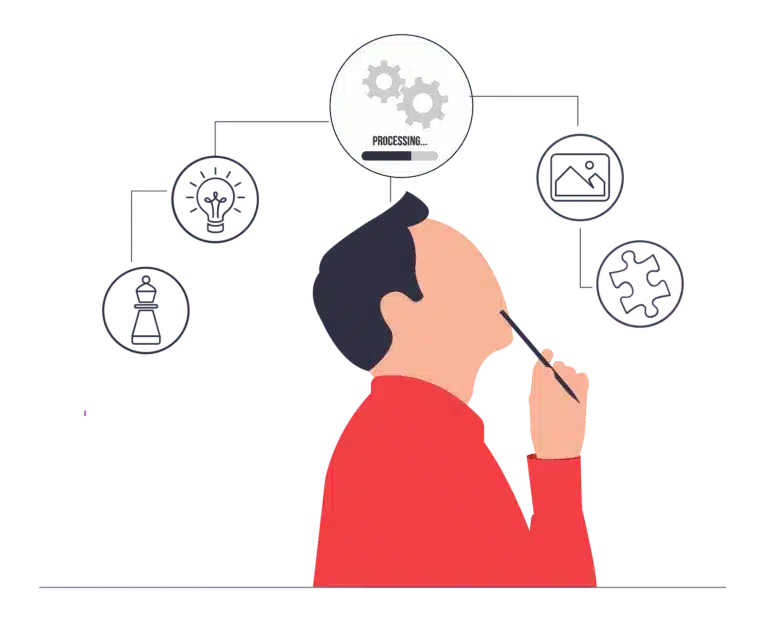In the ever-evolving landscape of education, the pursuit of excellence remains paramount. At the heart of this endeavor are the educators who shape the minds of the future generation. Hiring top educators is not just a preference but a necessity for educational institutions aiming to provide quality learning experiences. Traditionally, the process of selecting these educators has often involved classroom observations, a practice deeply ingrained in the hiring norms. However, as the world embraces technology and innovative approaches, it’s time for the field of education to rethink its hiring strategies. In this blog, we will explore the concept of hiring top educators without relying on classroom observations. We’ll delve into the challenges, alternative methods, and ethical considerations associated with this paradigm shift. Join us on this journey as we discover how modern HR practices are reshaping the future of education.
The significance of hiring top educators
In the realm of education, the selection of top educators is an endeavor of utmost importance. These educators, often regarded as the linchpin of academic excellence, bear the responsibility of molding young minds and fostering a love for learning. Hiring the right educators is not merely a matter of preference; it directly impacts the quality of education provided by an institution. In the traditional approach, classroom observations have been a cornerstone of the hiring process, providing valuable insights into an educator’s teaching style, classroom management skills, and interaction with students. However, the significance of hiring top educators extends far beyond what can be gleaned from a brief observation.
Educational institutions are recognizing that the conventional method of relying solely on classroom observations has limitations. It doesn’t always capture the full spectrum of an educator’s abilities, potential, or alignment with the institution’s values and educational goals. As such, the need to explore alternative methods for identifying top educators has become evident. This paradigm shift in the hiring process is driven by the desire to ensure that educators are not only proficient in their teaching methods but also possess the passion, adaptability, and innovation needed to excel in the dynamic field of education.
In this blog post, we will embark on a journey to understand the challenges posed by traditional classroom observations and explore innovative strategies for hiring top educators without solely relying on this practice. We will delve into the ethical considerations, the role of technology, and successful case studies that exemplify the evolving landscape of educator recruitment. Ultimately, we aim to shed light on how modern HR practices are reshaping the future of education by enabling institutions to identify and hire top educators more effectively and efficiently.
Rethinking the hiring process
In the ever-evolving landscape of education, the traditional approach to hiring educators, often reliant on classroom observations, is facing scrutiny. While classroom observations have long been considered a valuable tool for assessing an educator’s performance, they come with their share of challenges and limitations. This has prompted a growing recognition within the educational community that it’s time to rethink the hiring process.
One of the key reasons for reevaluating the hiring process is the inadequacy of classroom observations in providing a comprehensive assessment of an educator’s capabilities. Observations, typically conducted over short periods, may not capture an educator’s true teaching style, adaptability to diverse classroom environments, or innovative approaches to pedagogy. Moreover, relying solely on observations can introduce biases and subjectivity into the hiring decision, as the observer’s perspective may not always align with the institution’s specific needs and values.
As a response to these challenges, educational institutions and HR departments are exploring alternative methods that offer a more holistic view of educators’ qualifications and skills. These methods often incorporate technology and data-driven insights to supplement or even replace traditional observations. By doing so, institutions can assess educators based on a broader set of criteria, including their ability to adapt to evolving teaching methodologies, their alignment with institutional values, and their potential for long-term success in education.
In the subsequent sections of this blog post, we will delve deeper into these alternative methods and explore how technology and data analytics are playing pivotal roles in modern HR practices. We will also examine case studies and real-world examples that illustrate the positive outcomes of rethinking the hiring process, ultimately demonstrating the transformative potential of this approach in identifying and hiring top educators.
Leveraging technology in hiring
In the digital age, the integration of technology into various facets of our lives is undeniable, and the hiring process for top educators is no exception. Educational institutions are increasingly turning to technology to streamline and enhance their hiring practices. This shift toward tech-driven recruitment not only expedites the process but also opens up new avenues for assessing candidates beyond traditional methods.
One of the central elements in this transformation is the use of applicant tracking systems (ATS) and AI-driven tools. These systems are designed to efficiently sift through a large pool of applicants, identifying candidates who match specific criteria. By automating the initial screening process, HR professionals can save valuable time and resources, allowing them to focus on evaluating candidates who have demonstrated potential in a more comprehensive manner.
Moreover, technology plays a vital role in the assessment phase as well. Online assessments, virtual interviews, and simulation exercises enable institutions to gain deeper insights into candidates’ teaching abilities, problem-solving skills, and adaptability to modern educational tools. These assessments often provide a more objective and standardized evaluation, reducing the potential for bias in the hiring process.
The incorporation of data analytics is another noteworthy aspect of technology-driven hiring. Educational institutions can now harness the power of data to make informed decisions about candidate selection. Analyzing historical data on educator performance and student outcomes can help identify trends and predictors of success, aiding institutions in making data-driven hiring decisions.
As technology continues to evolve, so too will its role in the hiring process. In the subsequent sections, we will explore real-world examples and case studies that highlight the successful implementation of technology in educator recruitment. We will also delve into the ethical considerations and best practices associated with leveraging technology in hiring to ensure that educational institutions can identify and hire top educators effectively and ethically.
The role of HR in shaping the future of education
In the dynamic landscape of education, the role of Human Resources (HR) professionals extends far beyond administrative tasks. HR departments in educational institutions are increasingly becoming key strategic partners in shaping the future of education by redefining the hiring process for top educators. Their involvement goes beyond traditional recruitment duties, encompassing collaboration with academic experts and institution-wide stakeholders to develop hiring criteria that align with educational goals and values.
HR professionals are uniquely positioned to bridge the gap between the administrative and academic aspects of educational institutions. They play a pivotal role in defining the qualities and qualifications that characterize top educators, considering not only pedagogical skills but also adaptability, innovation, and alignment with the institution’s mission. This collaborative effort ensures that the educators selected not only excel in the classroom but also contribute to the broader goals of the institution.
Furthermore, HR professionals are instrumental in implementing modern hiring practices that incorporate technology and data analytics. They spearhead the adoption of applicant tracking systems, AI-driven tools, and data-driven insights that streamline the selection process and provide valuable data for decision-making. This data-driven approach allows HR departments to continuously refine their hiring strategies, adapting to the evolving needs of the institution.
Ethical considerations are also a critical component of HR’s role in shaping the future of education. HR professionals are responsible for establishing and enforcing ethical guidelines to ensure fair and unbiased hiring practices. By championing diversity, equity, and inclusion (DEI) initiatives, they work to create a diverse workforce that mirrors the student body and fosters a more inclusive educational environment.
In conclusion, HR professionals are at the forefront of reimagining the hiring process for top educators in education. Their multifaceted role encompasses collaboration, technology integration, and ethical considerations, all of which are instrumental in shaping a brighter and more innovative future for education.
Ethical considerations in hiring
In the pursuit of hiring top educators, ethical considerations hold a place of paramount importance. As educational institutions strive to build diverse, equitable, and inclusive learning environments, HR professionals are tasked with ensuring that the hiring process adheres to ethical standards. Ethical considerations in hiring extend to addressing bias, promoting fairness, and championing the principles of diversity and inclusion.
One of the critical ethical concerns in educator recruitment is the potential for bias to influence hiring decisions. HR departments must implement safeguards to mitigate unconscious biases that can unfairly favor or disfavor candidates. This includes providing training to recruitment teams on recognizing and addressing bias and designing hiring processes that are structured and objective, minimizing opportunities for subjective judgments.
Promoting fairness in hiring is another ethical imperative. Ensuring that all candidates have equal access to opportunities and are evaluated based on merit is fundamental. HR professionals play a key role in establishing transparent and standardized hiring procedures that provide every candidate with a level playing field. They also oversee the creation of clear job descriptions and criteria that align with the institution’s needs.
Diversity, equity, and inclusion (DEI) are integral components of ethical hiring practices. HR departments are instrumental in driving DEI initiatives within educational institutions. This includes actively seeking out diverse candidate pools, implementing affirmative action measures where appropriate, and fostering an inclusive hiring culture that values diverse perspectives and backgrounds.
Moreover, HR professionals are responsible for upholding legal and ethical standards related to hiring, such as compliance with anti-discrimination laws and ensuring that background checks and reference checks are conducted ethically and fairly.
In conclusion, ethical considerations in hiring are not just a moral obligation but also a legal and strategic imperative for educational institutions. HR professionals are the guardians of these ethical standards, working diligently to ensure that the hiring process is not only effective but also fair, inclusive, and free from bias, ultimately contributing to the creation of diverse and equitable educational environments.
Successful hiring without classroom observations
To truly grasp the viability of modern HR practices in hiring top educators without relying on traditional classroom observations, it’s essential to examine real-world case studies that exemplify the effectiveness of this paradigm shift. These case studies shed light on how educational institutions have successfully embraced alternative methods to identify and hire top educators, demonstrating that classroom observations are not the sole path to excellence in education.
One notable case study comes from a progressive urban school district that leveraged technology and data analytics to revamp its hiring process. By implementing AI-driven applicant tracking systems and incorporating predictive analytics, they were able to identify educators who not only excelled in the classroom but also showed a strong alignment with the district’s values and goals. The result was a more diverse and talented educator workforce that positively impacted student outcomes.
Another inspiring example comes from a prestigious liberal arts college that redefined its hiring criteria to prioritize adaptability and innovation. Instead of relying solely on observations, they introduced a comprehensive assessment that included simulated teaching scenarios and problem-solving exercises. This shift allowed them to identify educators who not only met traditional criteria but also exhibited the ability to thrive in a rapidly changing educational landscape.
Additionally, international schools that cater to diverse student populations have adopted innovative hiring practices to ensure cultural sensitivity and global awareness in their educators. These institutions employ rigorous assessments that go beyond classroom observations, focusing on candidates’ cross-cultural competencies and language proficiency.
These case studies collectively demonstrate that modern HR practices, supported by technology, data-driven insights, and a commitment to ethical and diverse hiring, are reshaping the way educational institutions identify and hire top educators. By learning from these successful examples, other institutions can take steps towards a more effective and inclusive educator recruitment process that aligns with their unique missions and goals.
Embracing modern HR practices
As we conclude our exploration of hiring top educators without traditional classroom observations, it becomes evident that the education landscape is undergoing a transformative shift. The traditional reliance on classroom observations, while valuable in many aspects, is no longer the sole path to identifying and hiring top educators. Modern HR practices, infused with technology, data-driven insights, and a strong commitment to ethics and diversity, have emerged as powerful tools in this endeavor.
The significance of hiring top educators cannot be overstated. They are the architects of future generations, shaping young minds, and imparting knowledge that will have a lasting impact. It is imperative that the hiring process for these educators be rigorous, fair, and aligned with the institution’s values and goals.
Our journey through this blog has showcased alternative methods such as AI-driven applicant tracking systems, data analytics, and innovative assessments that go beyond traditional observations. These methods offer a more comprehensive and objective view of educators’ qualifications and potential, reducing bias and subjectivity in the hiring process.
Furthermore, we’ve emphasized the pivotal role of HR professionals in this transformation. They are not just administrators but strategic partners who collaborate with academic experts to define hiring criteria, uphold ethical standards, and champion diversity and inclusion.
In embracing modern HR practices for hiring top educators, educational institutions position themselves to excel in the dynamic and ever-evolving field of education. They ensure that their educators are not only proficient in the classroom but also possess the adaptability, innovation, and values necessary to thrive in an increasingly complex educational landscape. By doing so, these institutions lay the foundation for a brighter and more inclusive future of education.
Conclusion
In a world that continually demands innovation and adaptation, the realm of education cannot afford to remain static. The traditional practice of classroom observations in educator hiring, while valuable in many respects, can be complemented and even replaced by modern HR practices. Our exploration has shown that technology, data-driven insights, and ethical considerations play pivotal roles in reshaping the hiring process for top educators. By embracing these changes, educational institutions can streamline their hiring processes, minimize bias, and ensure that they’re selecting the best educators for their students.
In conclusion, the key takeaway is clear: it’s time to evolve. As HR professionals and educators collaborate to redefine the criteria for excellence, we have the opportunity to build a brighter future for education—one where top educators are selected based on a comprehensive understanding of their skills, qualifications, and values. By doing so, we empower our institutions to deliver the highest quality of education, setting the stage for a generation of learners poised for success in an ever-changing world. Embrace the future of hiring, and together, we can elevate the field of education to new heights.
Optimize your hiring process with Testlify and unlock efficient, data-driven candidate selection. Save time and resources while discovering top educators who align with your institution’s mission. Try Testlify today!








